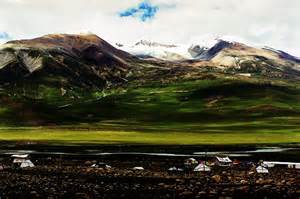When you hear the word "mutation," you may think of something destructive, or of Marvel's X-Men. But some mutations—which are just differences in DNA—can be historic. Take, for example, a genetic sequence found in the vast majority of people from Tibet.
当你听到“突变”这个词的时候,你可能会联想到某些具有破坏性的东西,或漫威漫画公司出品的X战警。但有些突变,如基因差异,却是有历史意义的。下面就拿一组基因序列来说吧,该组基因序列存在于绝大多数的西藏居民中。
Millions of Tibetans spend their days at average elevations of nearly 15,000 feet—that's more than half the height of Mount Everest. Up there, the air is thin—with 40 percent less oxygen than at sea level. That lack of O2 would leave most Westerners struggling for breath, but Tibetans seem to breathe easy.
数以百万计的藏族人居住在平均海拔近15,000英尺的地方——这可是半个珠穆朗玛峰的高度。那儿,空气稀薄——氧含量比水平面低40%。由于缺乏氧气,大多数来到此地的西方人都会感到呼吸困难。但藏族人却不会。

To find out how these highlanders cope, researchers compared the DNA of 90 Tibetans to that of people who are not altitude adapted. And they discovered a single change that prevents Tibetans' blood from becoming dangerously clogged with red blood cells—a response that can be deadly for non-native mountaineers. The finding is described in the journal Nature Genetics.
为找出其中原因,研究人员将90名藏族居民的DNA与那些不适合在当地居住的人的DNA进行比较。他们发现:藏族居民DNA里存在一个突变,该突变能防止藏族居民的血液过分充满血细胞——该反应对非当地居民的登山者来说是致命的。该项研究发表在《自然遗传》杂志上。
This mutation appears to have originated just 8,000 years ago. But it's so advantageous that today nearly 90 percent of Tibetans have it. While it's virtually absent in even closely related lowland neighbors.
该突变起源于8,000年前。如今,90%的藏族居民都有,这对他们来说真是太有利了。但那些居住在低地的、甚至与高地居民有密切血缘关系的邻居却几乎没有。
The finding demonstrates that a really useful mutation will always rise to the top.
该研究结果表明有利的突变总是能备受瞩目。











